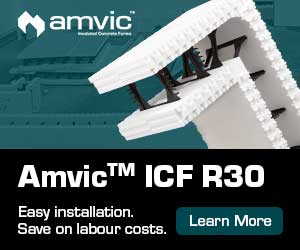By Tom Patton
Moving into a new year and especially 2025, there is always a pause for reflection. If we look back at building materials, wall assemblies, and building codes there is a lot that has happened since the 1970s. We have gone through these development phases from building green, healthy homes, thermal efficiency, air tightness, and now to sustainability and resiliency. Each of these “phases” has had an impact on building materials, methods, and how wall assemblies are built. Plus, take into consideration advancements in building and energy codes and third-party testing and certification.
Everyone jumped on the “building green” phase until every product had the word Green stamped on it. The “healthy home” movement improved construction quality related to building science, leading to better-insulated and air-tight envelopes, resulting in better indoor air quality (IAQ). This phase initiated a concern to have the wall assemblies meet building science norms with respect to dew points, condensation, mold growth, and the ability of the wall assemblies to breathe and dry. Materials for air barriers, weather-resistive barriers, and vapor retardants were developed, resulting in the need for sealants and tapes. Homes became more air-tight, and that created other issues for IAQ, air changes, and replacement.
Wall assemblies and codes became more complicated with multiple material layers, full-height continuous insulation, sealants, testing and certification, which meant increases in timelines, material, and labor costs. In addition, various types of exterior insulation are added to meet thermal requirements, which requires more attention to the attachment of the exterior finishes. All this requires more coordination, more building materials at a higher cost, and more labor and time at a higher cost. The ultimate end product is much better, if and only if it has been installed correctly.
From the 1970s to now, 55 years, conventional building materials have certainly evolved. Wood studs are now 2×6 but the quality of some of the wood is not as specified and the pricing has fluctuated dramatically over the last few years. The design and use of air and weather barrier sheathing has come a long way and is now basically a standard application. The use of vapor retardants has developed a debate whether to use it or not depending on climate zone. Interior insulation has a number of material and application variations, similarly, exterior insulation – EPS, XPS, mineral wool, etc.
As we now move into the “resiliency” phase, the addition to wood framing with load path columns, anchors, wind bracing, and hurricane straps add considerable cost and labor to the wall assemblies.
In this reflection, let’s look at the evolution of insulated concrete forms (ICFs) over the last 55 years. The block is basically the same. The industry has evolved for the better with manufacturing standards, more product testing, and manufacturing quality control. ICFs have been approved by the ICC with specific testing to meet an Acceptance Criteria (AC353) and adopted into the IRC section R404 and R608, plus engineering tables for above- and below-grade walls and lintels. Each manufacturer has enhanced their product lines with some of the biggest changes being in thicker EPS insulation to provide more R-Value in the colder climate zones. All the building science and structural aspects of ICF have not really changed but have been refined, over these 55+ years. One ICF block provides at least six attributes for a wall assembly, including airtightness, vapor control, fire resistance, and high thermal resistance. By weight, typically one block is 45% recycled material with webs made from recycled plastic. The structural integrity of a 6-inch reinforced concrete ICF wall assembly can withstand winds of 200 mph. All this with no added materials or labor in building the wall assembly. Just add the exterior and interior finishes.
The ICF industry has developed a number of specific accessory products to enhance constructability and speed. The ICFMA, which is an alliance with the major manufacturers, endeavors in a joint effort to promote the technical development and education of the ICF construction industry, along with the Build With Strength program promoted by the NRMCA.
Reconciliation is an assessment on compatibility, in the decision-making process, between building with wood framing or with reinforced concrete walls made with ICFs. As a contractor or developer, if you are able to assure your clients through your marketing that by building wall assemblies with ICFs, plus other related fortified elements, the building and occupants will be protected from all these weather events to a much higher degree than in a wood-framed home, wouldn’t that the better way to build, satisfy your customers, and give yourself peace of mind?
Meet the challenge of Mother Nature head-on with insulated concrete forms. Check out the ICFMA and the major ICF manufacturer’s webpages. Take a training course, have your crew take the course, and learn the advantages. We haven’t even mentioned the energy savings. Like the commercial said — “Try it, you’ll like it.”
Tom Patton
Tom Patton had a 30-year architectural design background prior to joining the ICF industry in 2001 with the technical support department at ARXX. Over the last 20 years, Tom has worked with major ICF companies developing technical documentation, application details, and training programs, as well as consulting and promoting ICFs with various associations including the ICFMA, NRMCA, and codes and standards committees. Currently, Tom is Corporate Brand Ambassador for Fox Blocks and co-developer of the Fox Blocks Integrated Learning Center.








